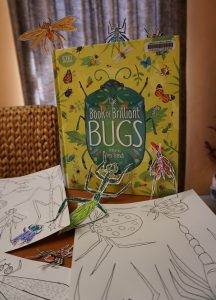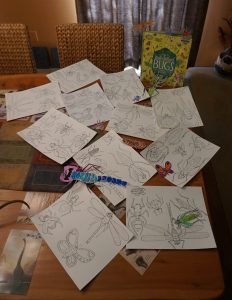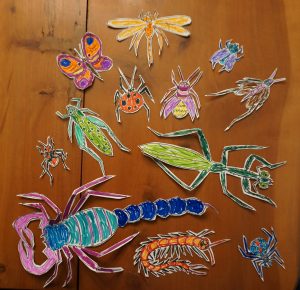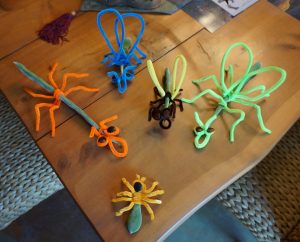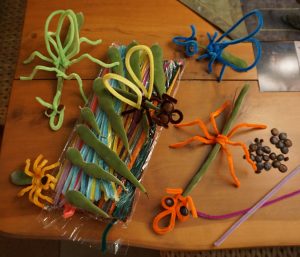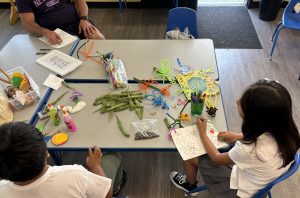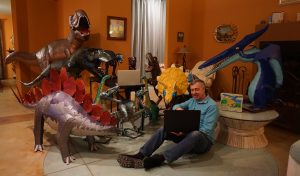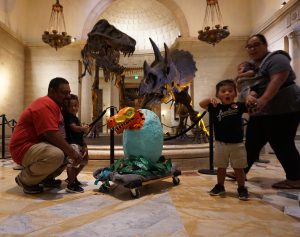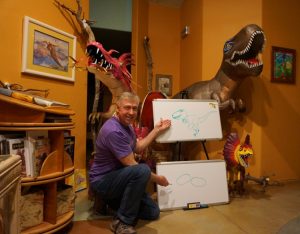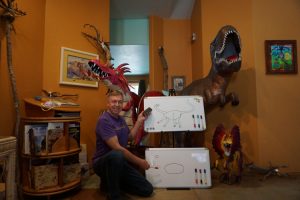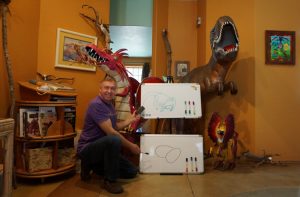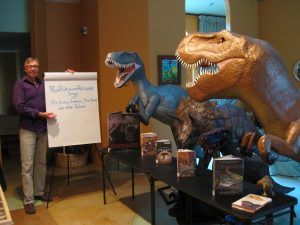Bugs have been around Millions of Years before the Dinosaurs. Can You image a Dragonfly with a 28 inch Wingspan? Well, Meganeuropsis was such an Insect with a 17 inch long body. I stood with my arms outstretched as if I could fly. If a Meganeuropsis landed on my chest. Its head would be beneath by chin and end of its body near my navel. Each wing tip near my elbows. Talk about a Scary Bug! Meganeuropsis lived in the early Permian Period around 300 million Years Ago. The largest prehistoric insect discovered. The lack of aerial predators at this time is thought to be the reason for their ability to reach such a large size. Arthropods are not insects but fall in the classification of bugs. Millipedes and Scorpions are Arthropods. Arthropleura was an 8 ½ foot long Millipede that crawled around 360 Million Years Ago. Eight foot long Jaekelopterus rhenanie a sea scorpion lived 390 Million Years Ago. Anomalocaris Canadensis looked like a combination of squid and shrimp. It could grow 3 to 6 feet long and lived 490 Million Years Ago.
Reading to Kids theme for July is “Amazing Animals”. For the 4th Grade “The Book of Brilliant Bugs” by Jess French covers their variety and importance in the Earth’s Eco System. The illustrations are wonderful. The information covered on all these creepy crawlers is outstanding. For our craft I drew a number of Bugs on several pages of cardstock for the kids to color and cut out. I colored and cut out a few for examples. In addition, I provided multicolored pipe cleaners, wisteria seeds & pods to make bugs from our imagination. What do you have in your home or yard to make bugs? Or other crafts? I brought some pill bugs (millipedes) in jars with leaf debris for food. They were let go in the garden after the reading.
Stay Tuned for More Dinosaur Fun Facts, Fiction & Crafts!
Consider a Membership with the Museum. In addition to Supporting Their Valuable Work there are Benefits to You. Special Preview Events for Members Only as well as Virtual Access Exclusive for Members. Below are 3 of my favorites Museums. For more information and access to general public eLearning check out the links below.
The Natural History Museum of Los Angeles County www.nhm.org under Research & Collections / Digitized Collections will allow you to browse their Collections. Check out the latest Activities on their site. Mark Your Calendar for the 9th Annual Dino Fest – Saturday September 21st!
The American Natural History Museum www.amnh.org You will find eLearning for Families, Students & Educators. Explore the Museum Virtually. Check Out SciCafe: Video Talks and Meet the Icons: Stories behind the Exhibits! There are Video Series covering Behind the Scenes at the Museum with Space & Dinosaur Explainers.
Chicago’s Field Museum www.fieldmuseum.org You can talk to “Maximo the Titanosaur” online, Yes Really! Visit Sue the largest T-Rex discovered! Check Out “Brain Scoop” and the Learning Resources – many are also in Spanish.
Check Out Your Libraries eBooks. My local Library has over 900 eBooks on Dinosaurs! Here are four books for Drawing Dinosaurs that you might find at your Library. Ask your Librarian about others.
1-2-3 Draw Dinosaurs and other Prehistoric Animals A step by step guide by Freddie Levin (2001)
Draw 50 Dinosaurs and other Prehistoric Animals by Lee J. Ames (1977)
Draw it Dinosaurs by Patricia Walsh (2006)
I Can Draw Dinosaurs by Terry Longhurst (2003)
Stay Safe & Well
“Encouraging the Appreciation of Art and Education through the Inspiration of Dinosaurs”
Paul & Prehistoric Pals
Your feedback is appreciated, comment below or email:
Thank you!

